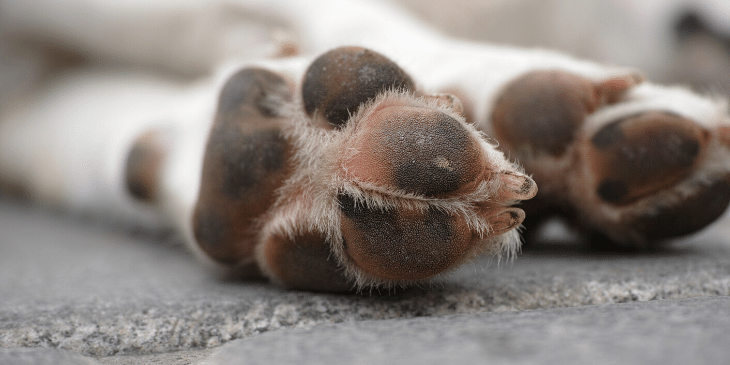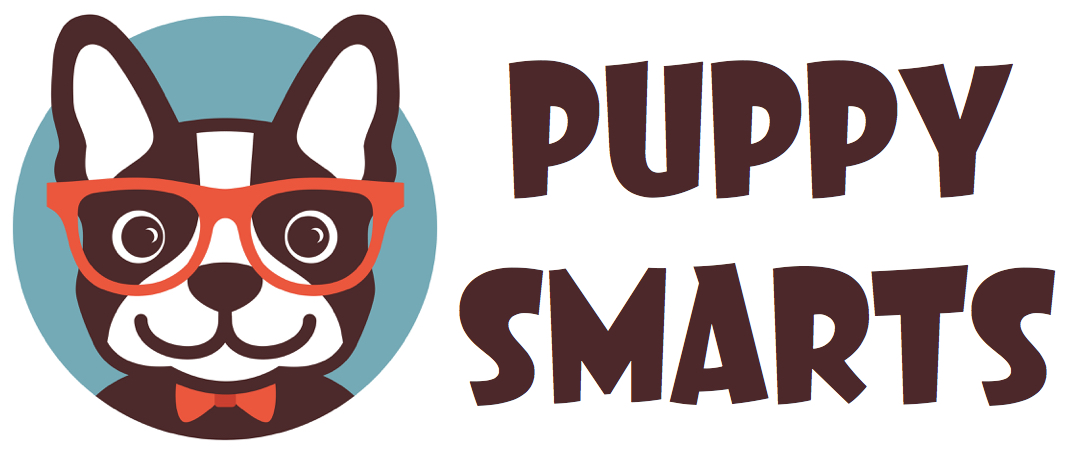How to Treat a Dog Paw Pad Injury

Contents
Your dog’s paw pads are an essential part of his overall health and wellbeing. They protect the bottom of your dog’s foot from rocks and debris. Although a dog’s paw pads are pretty tough, dog paw pad injuries are quite common. They can be caused by a variety of things, including sharp objects, hot pavement, extreme cold, or rough terrain your dog encounters on his daily walks. Here are the first aid steps you should take if you suspect your dog has a paw pad injury.
The Purpose of Your Dog’s Paw Pads
Your dog’s paw pads are thick and almost leathery or rubberlike, and they function kind of like the bottom of a shoe. They cushion your pup’s steps and provide traction so he doesn’t slip on rough, uneven, or wet terrain. The paw pads protect the joints from shock and insulate it from hot or cold conditions.
Signs of a Dog Paw Pad Injury
Since the footpads are so important, any foot injuries should be addressed right away. If you notice excessive licking at the foot, limping, bleeding, or any other signs of foot pain. you’ll want to investigate right away. Look for tears, punctures, burns, blisters, or cuts on the food pad and in between the toes. Be sure to check for broken toenails, too.
First Aid Care for a Dog Paw Pad Injury
Providing first aid right away is crucial for dog paw pad injuries. Do everything you can to get your dog to stop walking on or licking at the injured paw pad, then follow the steps below.
1. Clean the injury.
Your first priority is to clean the injury. Start by flushing lacerations, puncture wounds, or blisters gently with warm water. If you suspect the injury is a burn, cool water is best. Use tweezers to remove any debris that doesn’t flush away, but be careful not to push rocks, broken glass, burrs, or other foreign objects deeper into the footpad. Once the wound or abrasion is free of debris, flush the wound with an antiseptic, such as diluted betadine or chlorhexidine solution. This will prevent infection.
2. Stop any bleeding.
Once the wound is clean and free of debris, it’s safe to apply pressure to lacerations or puncture wounds to stop any bleeding. If you can, wrap an ice pack in a clean towel and hold it on the wound with firm pressure to encourage the blood vessels to constrict. It’s also a good idea to keep blood stop powder in your pet first aid kit for broken or bleeding toenails only (Never use blood stop powder on an open wound). The more severe the injury, the longer it will take for the bleeding to stop. If you can’t get the bleeding to stop after applying pressure for several minutes, an emergency vet visit is required. In this case, call the vet and let them know you’re coming and keep the pressure on the wound while someone else drives you to the vet. Abrasions, burns, or blisters on the surface of the paw pad may not bleed much, if at all, but they can still require care to support the healing process.
3. Evaluate the paw pad injury.
While minor injuries can be taken care of at home with a decent first aid kit, more severe paw injuries will require veterinary care. If you do get the bleeding to stop, evaluate the injury and decide if you can treat it at home, or if a trip to the veterinary clinic is required. If there’s a deep or jagged cut on the dog’s pad, it should be assessed by the vet in case stitches are necessary. If there’s debris embedded in the wound that you can’t remove on your own, the vet can sedate him and remove it surgically. In some cases, antibiotics are necessary to prevent infection. If the wound seems minor, go ahead and proceed with the next step. If the wound seems to be causing your pup a lot of pain, or you are at all unsure how to treat it, a trip to the vet will give you peace of mind and ensure your best buddy gets proper care.
4. Home treatment of a dog paw pad injury.
If you’re going to treat the paw pad at home, start by drying the area gently with a clean towel. Apply some Neosporin (triple antibiotic ointment) to the wound and cover it with a non-stick gauze pad and secure with first aid tape. Now, cover your dog’s foot with Vetwrap, roll gauze, or an elastic (Ace style) bandage. You want the bandage to be secure enough to stay on, but don’t make it tight enough to cut off his circulation, so make sure you can get two fingers underneath it. Wrapping the bandage around the ankle and hock can help to keep it from slipping off. You can also secure the bandage with additional tape if needed, but never use metal clips or pins your dog might chew off and ingest.
If the injury is a very minor scrape, you probably don’t need a full bandage. Cover the area with a liquid bandage to protect the sensitive nerve endings and help keep it clean. Be sure to keep the injured paw elevated while the wound dressing dries and make sure your dog doesn’t lick it off.
5. Caring for your dog’s paw injury while it heals.
Whether you treat the wound at home or take your pup to the vet, be sure to keep the injury and bandage dry throughout the healing process. Commercial booties or a plastic bag can be used to protect the bandage in wet weather conditions. Clean the wound, reapply Neosporin, and change the bandage once a day, unless the vet has provided different instructions.
Keep the wound covered until it’s completely healed. If necessary, use an Elizabethan collar or Bitter Apple Spray to keep your pup from licking the area or chewing the bandage off. Do not allow him to run or do a lot of walking before the injury is healed, and treat the tender area with care even after it’s healed until it’s no longer painful to the touch. Every wound is different, and healing times will vary based on the severity and care of the wound during the healing process.
Final Tips for Dog Paw Pad Injuries
Injured or torn foot pads will take longer to heal if your dog licks at them or does more walking than necessary. If the wound opens up or becomes infected, healing will be delayed even further. Once the injury has been cared for by you or our vet, keeping your dog quiet is absolutely crucial for the healing process.
